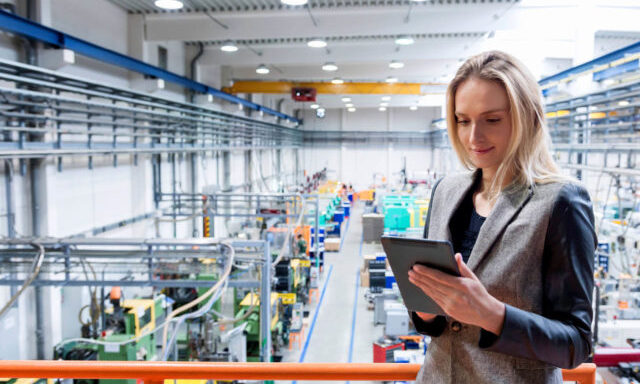Smart Factory and Smart Manufacturing
The ‘smart factory’ represents a move from the traditional automation of the past to connected systems that makes use of data to cope with increasing business demands. A smart factory should be flexible and able to optimise its own performance, self-adapt in real-time, and run entire production processes by itself. Smart factories can operate on-premise, but could also connect to a global network of similar systems.
Manufacturing has always involved high-speed decision making, constant change and data. It’s now a connected, complex manufacturing world, with increasing cost and value in incorporating connectivity into new machines. This is a challenge and an opportunity, giving rise to concepts like Industry 4.0 and the Internet of Things (IoT).
For example, IoT systems can collect manufacturing data in a transparent, comprehensive and interactive way. They provide real-time visibility into assets and equipment, quality of processes and factory resources. Data can also can produce digital factory simulations that predict how a product is expected to be manufactured. There is the idea of a “virtual factory”, which is a real-time simulation of how production is manufactured.
A virtual factory can provide a role-appropriate, operational view of the entire factory floor (including plant, processes and equipment, etc) for anyone, anytime, from anywhere. This virtual factory can be the cockpit for piloting and improving a factory.
A smart approach to manufacturing
A new ‘smart’ approach to manufacturing has a significant impact on performance, changing how factories operate with connected industrial devices and assets communicating their state, condition and health – allowing services to respond. Businesses also understand that the huge amount of data generated and directed from products and operations can be turned into insight and turned into a competitive advantage.
Advantages from data can be gained by analysis, rapidly turning data into insight and actionable information, increasing productivity, identifying inefficiencies, and driving operational improvements. To take advantage, manufacturers need to deploy enterprise systems, investing in systems which can efficiently manage massive amounts of complex product and operational data. This provides employees and executives the ability to make connections between day-to-day operations and strategic business goals.
Interoperability is the key to smart factory success, as technology systems should work together so businesses can access data from different parts of the business. This allows the digitisation of business processes – from product design, to manufacturing process planning, to manufacturing execution. They must also provide their employees tools to turn this data into actionable intelligence.
The smart factory can reduce costs and material waste, and requires fewer people with smaller operating costs. It’s more agile, delivering high quality and fast production that is responsive to customer needs, providing the business with more granular and up-to-date information.
Moving towards the smart factory doesn’t mean a complete overhaul with huge upfront investment.
James Woodall, CTO of industrial wearables firm Intoware, has said, “Moving towards the smart factory doesn’t have to mean a complete overhaul with huge upfront investment. Sensors can be retrofitted to existing machinery, so choose from your existing infrastructure, investigate vendors offering IoT retro-fitted solutions and trial it.”







